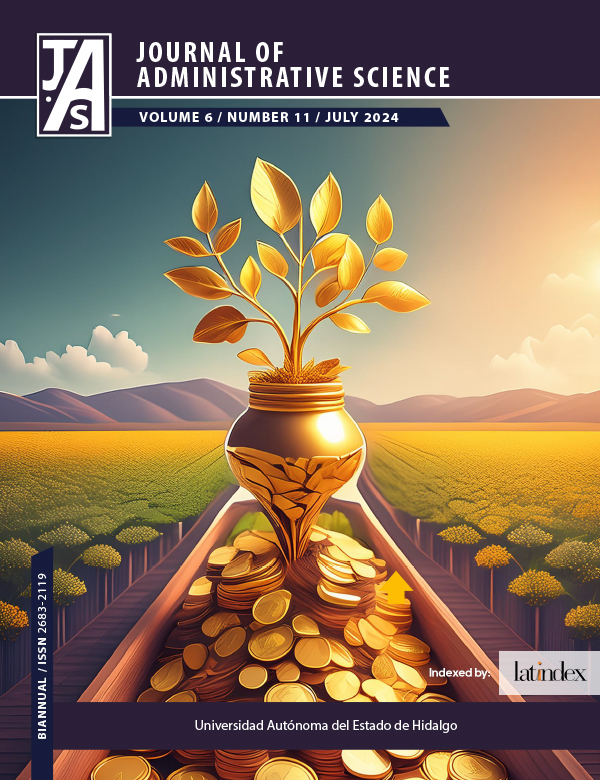The Otomi culture in the Valle del Mezquital, Hidalgo, Mexico, as an alternative for development of rural tourism.
DOI:
https://doi.org/10.29057/jas.v6i11.12352Keywords:
Rural Tourism, Otomí Culture, Hidalgo StateAbstract
Rural tourism has great potential to stimulate the local economy and culture of rural communities, this type of activity offers visitors products and activities. In addition to promoting the role of tourism in the assessment and safeguarding of rural peoples, in cynical terms with natural resources, biodiversity and cultural expressions. The state of Hidalgo in this regard has a rural tourist potential that has a great natural and cultural diversity, where indigenous communities offer unique expressions for the development of routes that will allow for the increase of visitors' flows and improvement of the quality of life of the Otomi communities In this work, tourist routes are proposed to develop rural tourism in the state of Hidalgo, through an analysis of resources and identification of communities where attractive activities can be implemented for the development of rural tourism, in addition to teaching and valuate the importance of the otomí communities.
Downloads
Publication Facts
Reviewer profiles N/A
Author statements
Indexed in
- Academic society
- N/A
- Publisher
- Universidad Autónoma del Estado de Hidalgo
References
Fernández G., y Guzmán G. (2005). Patrimonio industrial y rutas turísticas culturales: algunas propuestas para Argentina. Cuadernos de Turismo, (15), 97–112. Recuperado a partir de https://revistas.um.es/turismo/article/view/18491
UNWTO, (2010.). Turismo Rural. uhttps://www.unwto.org/es/turismo-rural
Secretaría de Turismo. (2012). Turismo Alternativo. Una nueva forma de hacer turismo. SECTUR. https://cedocvirtual.sectur.gob.mx/janium/Documentos/006145.pdf
Garduño, M., Guzmán, C., y Zizumbo, L. (2019). Turismo rural: Participación de las comunidades y programas federales. El Periplo Sustentable, (17), 5-30. file:///C:/Users/pc1/Downloads/Dialnet-TurismoRural-5026276%20(3).pdf
Valdez, D. I., y Ochoa, B. (2015). Turismo Rural. ITSON. https://www.itson.mx/publicaciones/Documents/ciencias-economico/turismorural.pdf
De la Torre, G. (1999) “Turismo de aventura en la Tarahumara. México, SEDESOL-FONAES” en: Iniciativa con proyecto de decreto en materia de turismo rural sustentable. http://www.senado.gob.mx/index.php?ver=sp&mn=2&sm=2&id=38583#_ftnref2.
Secretaría de Turismo. (2004). Turismo alternativo. SEMARNAT. https://apps1.semarnat.gob.mx:8443/dgeia/compendio_2009/compendio_2009/10.100.8.236_8080/ibi_apps/WFServlet43c3.html
INEGI, (2019). Censo Nacional del Gobierno Federal 2019, https://www.inegi.org.mx/programas/cngf/2019/
Secretaría de Turismo. (2023). Valle del Mezquital – Hidalgo.Travel. https://hidalgo.travel/wordpress/?p=1182
Secretaría de Cultura del Estado de Hidalgo. (2023). Festival "Cultura y Muerte" - Centro Cultural Regional del Valle del Mezquital - | Secretaría de Cultura. Cultura Hidalgo. http://cultura.hidalgo.gob.mx/eventos/festival-cultura-y-muerte-centro-cultural-regional-del-valle-del-mezquital/
Escapadas. (2023). El Ganthe: la apuesta en Hidalgo para impulsar el ecoturismo - Escapadas por México Desconocido. Escapadas México desconocido. https://escapadas.mexicodesconocido.com.mx/hoteles/el-ganthe-ecoturismo/

















